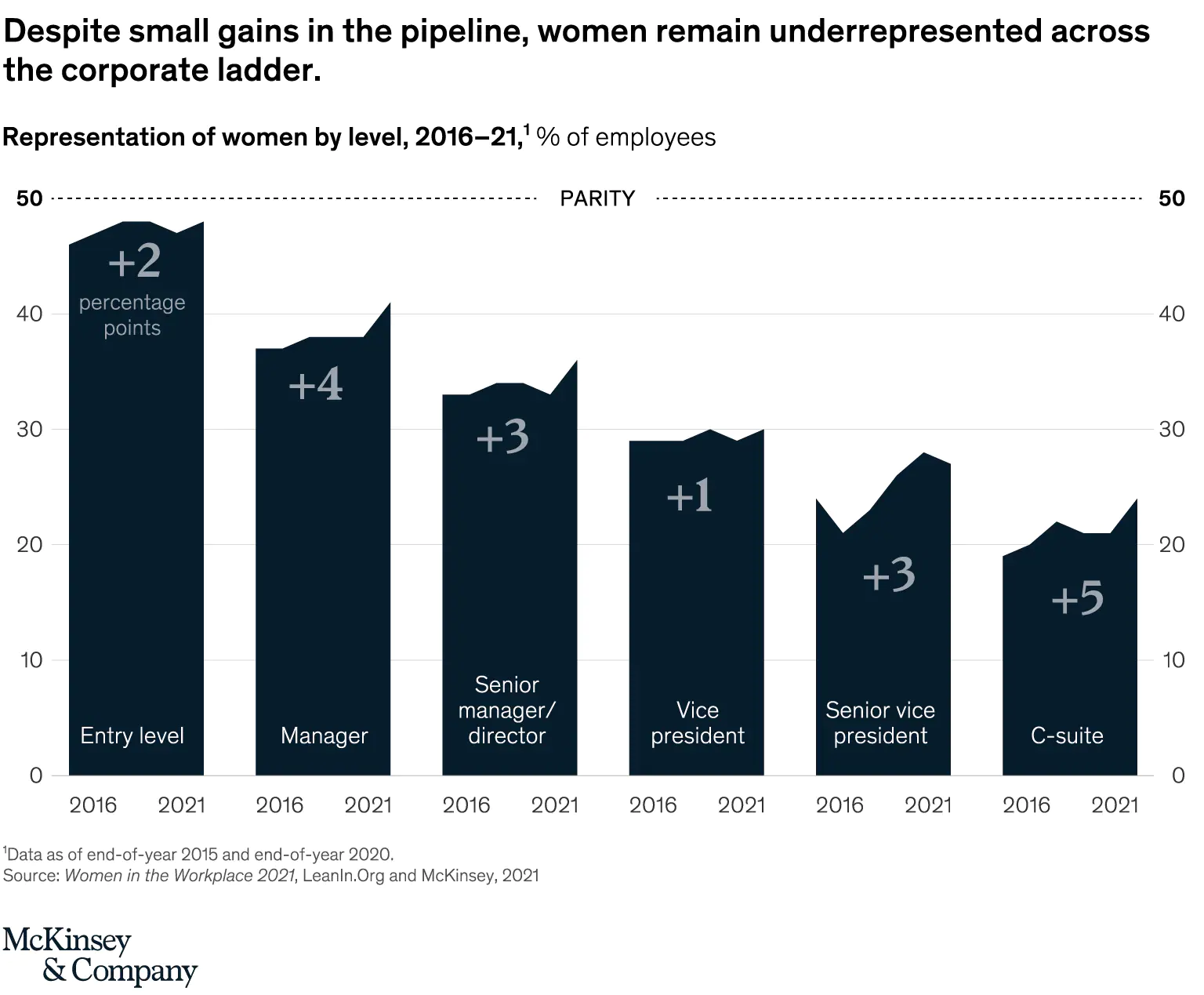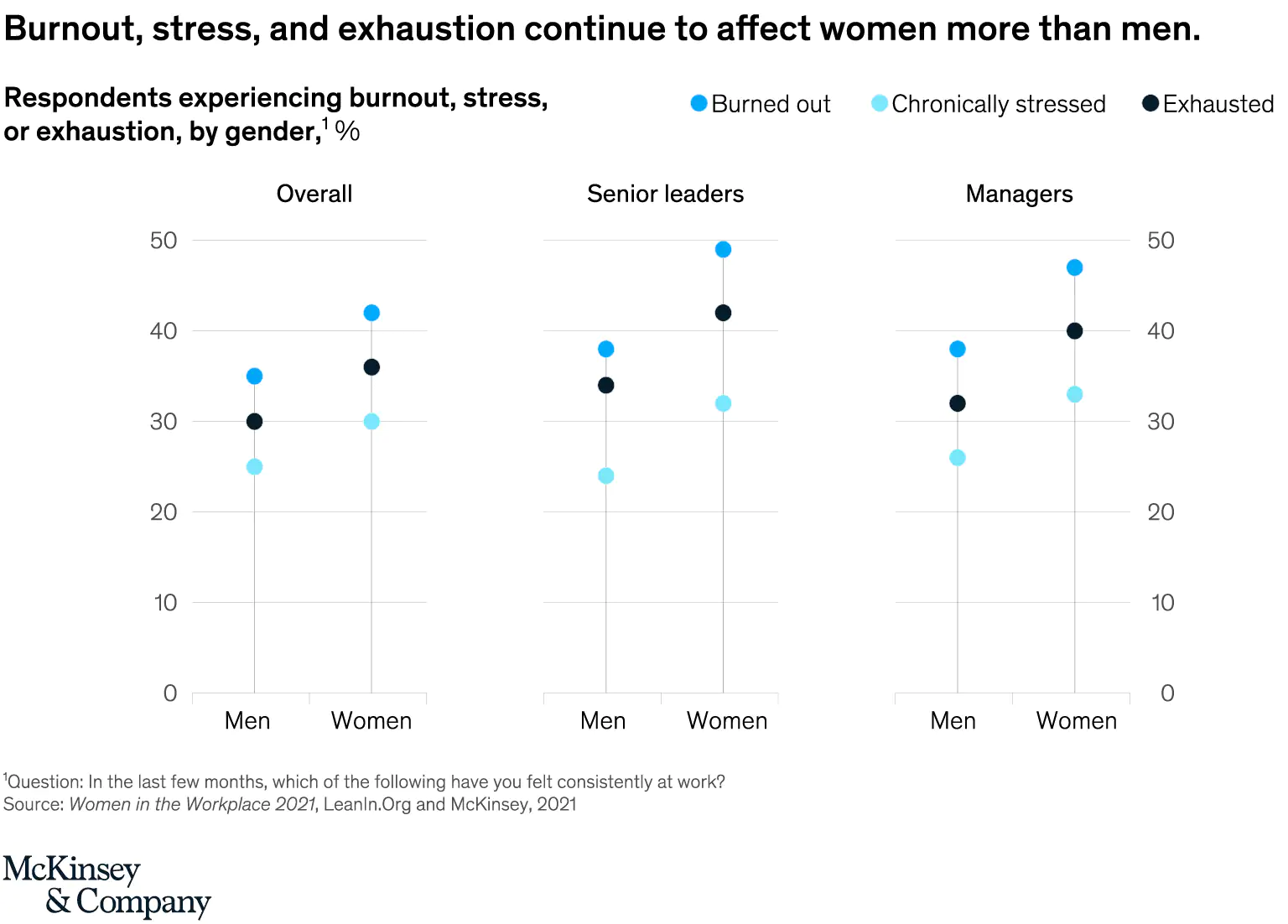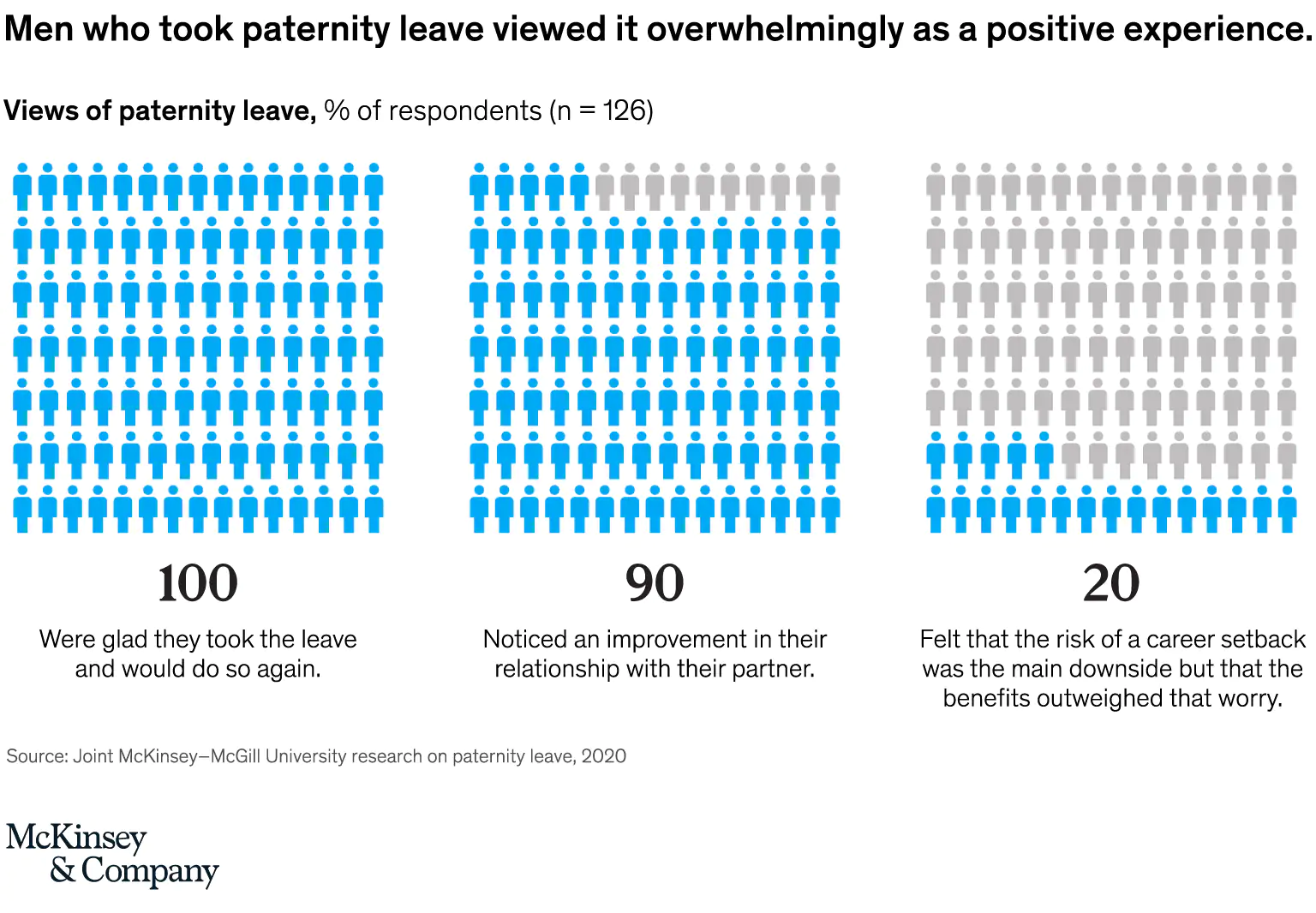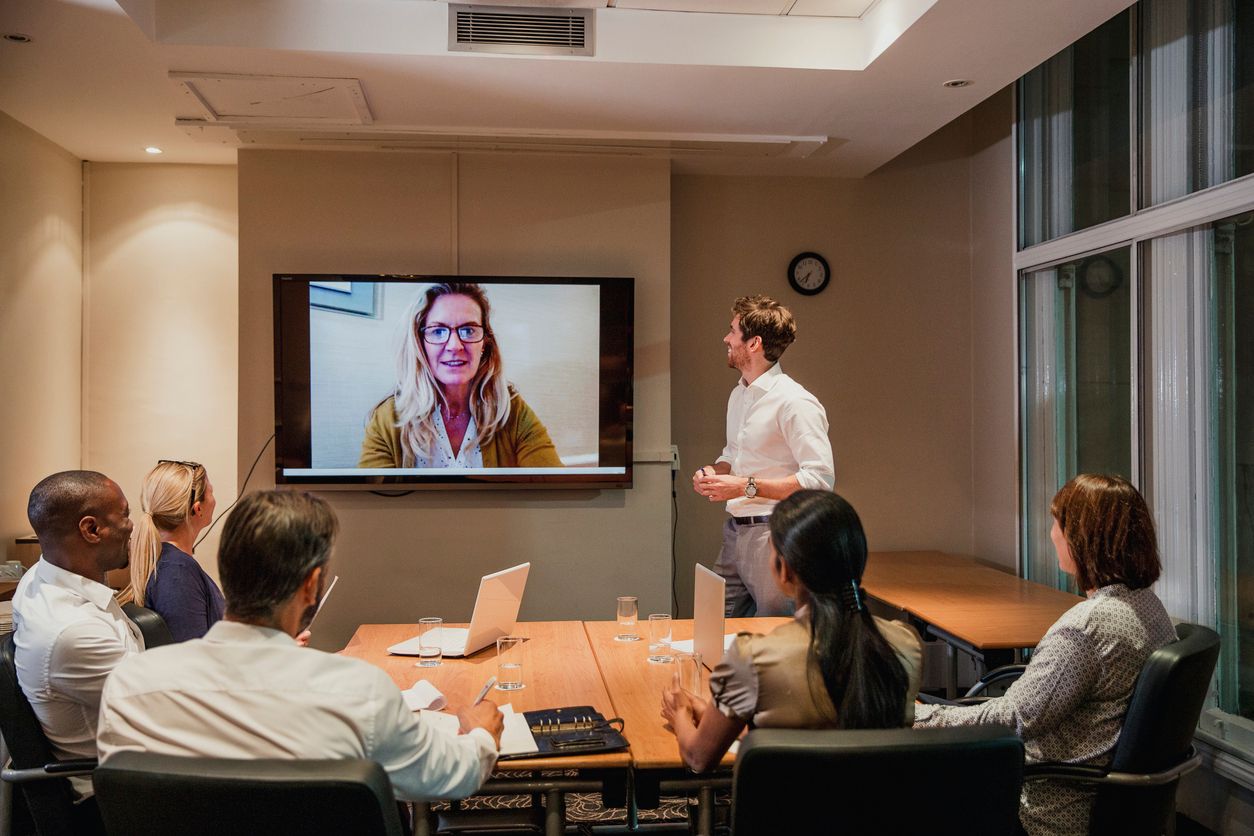There's no doubt that diversity in the workplace is a leading topic of conversation today. But whilst countless companies are implementing valuable initiatives to create more inclusive company cultures, women continue to be disproportionately affected by professional and economic inequality.
For instance, women continue to be paid less than men, and far more women experienced unemployment due to the current pandemic than their male counterparts. Not to mention, there is still a lot of bias affecting women’s ability to obtain jobs, as women are 30% less likely to be called in for an interview than a man with the same skills and experience.
As we can see, there is still a lot of work left to be done when it comes to achieving gender equality and fairer conditions for women in the workplace. But, this is about more than just ethics; it’s also about what’s best for your business, as a gender diverse workforce can lead to increased innovation and better financial outcomes.
With all that in mind, attracting more female talent can come with challenges, especially if you aren't evaluating and adapting your current recruiting strategy. Despite having the same job search behaviours as men, qualified women apply to 20% fewer positions.
Whilst it's impossible to pinpoint one solid reason why, many theorise that it's because modern talent acquisition doesn't always cater to women's career wants and needs.
In order to help you create a more balanced and inclusive hiring strategy, we've compiled a list of the top ways you can reconsider your recruiting methods to attract and retain more female talent!
Making your job ad more inclusive
When it comes to writing the perfect job ad, what wording you land on is crucial. You'd be surprised how much of an impact language can have when sourcing underrepresented groups. So, next time you’re crafting an ad, be conscious of any gendered phrasing that might deter female candidates from applying.
Here are our top tips for keeping your job ads inclusive:
- Avoid male-coded language - Certain phrases, such as 'crushing it', 'strong', or 'competitive environment', have integrally masculine connotations that can put off women looking for an inclusive workplace.
- Use gender inclusive language - Ads that contain gender non-specific language attract 42% more responses than those that don't so make sure you’re using inclusive wording and pronouns, such as ‘they’, ‘them’, or ‘you’, to describe your prospective employee.
- Only include necessary requirements - It's been reported that women generally don't apply to a role unless they meet 100% of the requirements, so being more concise and snappy with your essential criteria will help avoid putting off female applicants.
- Include the salary - A LinkedIn study revealed that knowing how much a role pays is far more important to female candidates than their male counterparts, as this transparency suggests the company is committed to paying employees fairly and equally, regardless of gender.

Try blind hiring
If you're looking to reduce unconscious biases from influencing your recruitment strategy and make your hiring more women-friendly, you should consider implementing blind hiring. Blind hiring refers to a process which removes any non-essential details from a candidate's resume that could subconsciously (or consciously) sway a hiring manager's decision, such as gender, age, race, or class, to name a few. As a result, the candidate's skills and experience become the main focus.
Hiding gender may seem extreme but it could actually be pivotal to ensuring that the applicant selection is undertaken fairly and without bias. Studies reveal that women are currently substantially less likely to be called in for an interview after applying for the job, despite meeting all outlined requirements. However, when blind hiring, women are nearly 50% more likely to get selected for the role!
Plus, implementing blind hiring can be straightforward. Simply invest in HR tools, such as Blendoor, which obscure the names and photos of candidates to help anonymise your process, or create a standardised applicant tracking system which only asks for skills and experience and does not require information regarding gender identity or names.
Reconsider your interviewing process
There are so many ways in which gender bias can enter the interviewing room. For one, interviews are designed for candidate's to show off their accomplishments and skills, a social attribute that many studies show men to be much more adept at. Psychologists refer to this as the "confidence gap".
To make your interviewing process more inclusive to all kinds of people with different levels of social confidence, try creating a standardised interview process to ensure that all are treated equally and nobody is left at a disadvantage. An unstructured interview can result in those less accustomed to talking themselves up to get left behind. But, by sticking to a set list of proposed questions, you give all candidates an equal opportunity to show off their skills and brag about their amazing attributes.
Additionally, to create the most inclusive interview experience for female candidates, you need to diversify your interviewing panel. Having multiple interviewers from a range of backgrounds, ages, and genders will not only help reduce unconscious biases towards women and minorities, but it will act as a huge drawing card for candidates that want to work in a diversity-forward business.

Create a positive company culture
Attracting and retaining more female talent is just as much about company culture as it is about the state of your recruiting methods. You may have a perfect recruiting process which caters to and resolves any concerns female candidates may have, but if your culture alienates women, then you're not going to hold onto them for very long.
To make sure your commitment to equal opportunities and inclusivity align with your workplace culture, you should employ inclusive diversity initiatives.
For instance, you could:
- Implement a relaxed, flexible dress code - Strict dress codes can reinforce disbalanced gender expectations for female employees, such as expecting women to wear heels or dresses. Make your dress code more neutral to give everybody the chance to come to work feeling as comfortable as possible.
- Send out regular surveys - Many people feel incapable of speaking openly about being overlooked or discriminated against in the workplace, so sending out surveys every month grants them a voice. Any constructive feedback you receive back will help you improve your culture.
- Train management - Your culture is only as good as the values the heads of departments pass down to employees, so start from the top with some high-quality, diversity learning sources for managers.
Set gender diversity goals
With something as abstract as diversity, creating and setting some concrete metrics to strive towards can be a valuable look for implementing dynamic changes. For this reason, you should make diversity key to the bottom line by setting some meaningful goals.
Every company faces unique diversity challenges, which is why every company should be setting their own diversity targets. To understand what your specific areas for improvement are, you need some insights.
Here are some ways to gather information about diversity and inclusion in your company:
- Study each department individually - Analyse the number of women in each department to see if some teams have much poorer gender diversity than others and why that might be.
- Conduct employee surveys - Ask your staff how inclusive they feel their work environment is to understand which departments might be contributing to creating a non-inclusive attitude and which demographic is being affected the most.
- Compare your staff to your talent pool - Measure up the diversity of your workforce against the diversity of your job applicants. If there are major disparities and your talent pool is much more diverse, you may need to address biases present in your company’s recruitment.
- Look outside your business - Find out what the standard female representation looks like within your industry to give yourself a better indication of what "good" gender diversity should look like.
With this information, you’ll be able to set some benchmarks for measuring diversity and inclusion in your workplace. That said, be realistic and consider the size of your business when setting goals. Instead of saying, ‘I want to make my workforce 50% female’, try something more attainable, such as ‘I want to increase the number of women in senior management positions by 40% by the year 2030’. Keeping the goals easier to obtain will make it easier for your hiring team to strive towards them.
Encourage more women to enter leadership roles
According to studies, female representation steadily decreases the higher up the corporate ladder you go. That means there are significantly less women in senior roles and in the C-suite as men. Many hypothesise that this is because women are disproportionately overlooked for managerial promotions or they don’t feel qualified enough to put themselves forward, preventing them from rising the ranks at the same pace as men.

For this reason, businesses dedicated to inclusivity need to lead by example and actively encourage their female employees to put themselves forward for managerial positions. Ask your hiring team to determine any potential candidates for promotion and ask them to directly approach them. Giving female employees the push they might need to take on a leadership role will make a big difference in increasing your gender diversity from the top to the bottom.
Not only does better managerial diversity make the recruitment process less susceptible to unconscious bias, but the more female representation in senior roles will attract other women looking to progress their career and rise the corporate ranks.
But, this is more than just a recruitment tactic or box-ticking exercise. Aside from promoting equal opportunities, instating more female leaders in the workplace has great business benefits. Companies with higher gender diversity up the corporate ladder actually tend to perform better financially, and reports also claim that teams under female managers feel more supported and motivated than those in company’s dominated by men.
Start a mentoring program
With confidence and feeling under qualified being two of the more common reasons holding many women back from making big career moves, more companies need to look into starting mentoring programs to help female employees improve their skills and develop their career goals. And it’s no surprise. Not only are mentees promoted 5x more than those without mentors, but it's also been reported that mentoring programs boost retention and promotions amongst women and other minorities from 15% to 38%!

Start planning your program by deciding how, when, where, and why this program will take place. Will it occur once a week in the office? Do you want to boost female employee retention? Once you’ve determined the logistics and finalised these details, it’ll be much easier to create a space to form significant mentoring relationships.
It’s also important at this stage to set aside a budget to help fund any essential learning resources or even just to pay for the mentor and mentee to grab lunch every now and again. There needs to be some incentive for senior staff to sign up to this mentoring program, so make sure that this initiative does not require managers to dedicate extra time to collating materials or paying for lunch.
Allow flexible working
Flexible working arrangements have become increasingly more popularised amongst workforces across the globe since the recent pandemic. Not only has flexible working been proven to lead to heightened productivity amongst staff, but it can also help promote a better work life balance. For female candidates, this is particularly attractive, as women are more likely to experience work-related burnout than men.

Additionally, offering flexible working eliminates the need for many women to reduce their hours to part-time after having a baby, something which is a leading factor contributing to the gender pay gap. Instead of taking a step back from their career, women in flexible working situations are more likely to continue working, but under circumstances that adapt more to their needs.
Not to mention, a lot of research has been undertaken linking the uptake in remote working with the levelling of gender roles in opposite sex families. In this sense, with a higher number of fathers working from home, there has been a more equal distribution of house and childcare duties in many families, something which has also resulted in a better work-life balance for many working mothers.
Implement equal paid parental leave
If you want to demonstrate to female candidates that you are genuine about your inclusivity efforts, then you need to implement paid parental leave regardless of gender.
Currently, many working women struggle to return to or keep their full-time job after having a baby, especially as many fathers are not sharing that leave.
For women to be able to step back into their career post-baby and help reduce the gender pay gap, more businesses need to make parental leave more equal and gender neutral. Not to mention, equal parental leave has even been reported to lead to better mental health and career progression for new parents, as well as being an overwhelmingly positive experience for fathers.

Finally, not only can a lack of proper paternity leave create economic gender imbalances in heterosexual families, but it can also be incredibly exclusionary to LGBTQ+ couples wanting to start a family. So if you want to appeal to women and other diverse talent, this is an employee benefit you should definitely consider.
Invest in training
One of the most powerful things you can do to make your workplace as inclusive to female applicants and employees as possible is to educate your workforce. Effective training initiatives can help decrease the chance of workplace discrimination and improve workplace culture.
For successful diversity training, you need to analyse your business needs. If you've already set some diversity goals, the information you gathered in preparation will come in very handy.
Once you know the what, you can crack on with the how. Whilst every business is different and will warrant a different approach, here are some basic diversity training ideas:
- Induction training for new hires - During the onboarding process, make sure your employees are aware of how to report issues they might have and what your inclusive, collaborative values are.
- Conduct engaging training days - Studies show that diversity training can make people feel defensive if it's all doom and gloom, so try and keep activities fun and the intensity light.
- Mobile learning resources - Investing in online courses can help give employees more control over when and where they conduct their training, making them more attentive and motivated then they do.
Ultimately, the only way to address gender bias is to recognise and address it, so investing in learning resources and conducting training sessions will help combat any ignorances present within your company culture.

Final thoughts...
Taking active steps to make your company more inclusive and accommodating of female candidates is the first step to making your workforce more diverse. That said, remember that 'female' is a very broad category with many intersections based on race, religion, sexuality, disability status, and so on.
Each woman's experience is different from the next, and understanding how to make your process more inclusive to all kinds of people, from all walks of life, is the most powerful and valuable thing you can do for your company.



![How to Hire a Remote Software Developer [ Step-by-Step Guide ]](/content/images/2022/04/iStock-1163541557.jpg)
![9 Zoom Interview Questions to Ask Software Engineers [ Recruiter´s Guide ]](/content/images/2022/04/iStock-1319790212.jpg)
![What is the Average Software Developer Salary? [ For Startups ]](/content/images/2022/03/iStock-1017296544.jpg)
